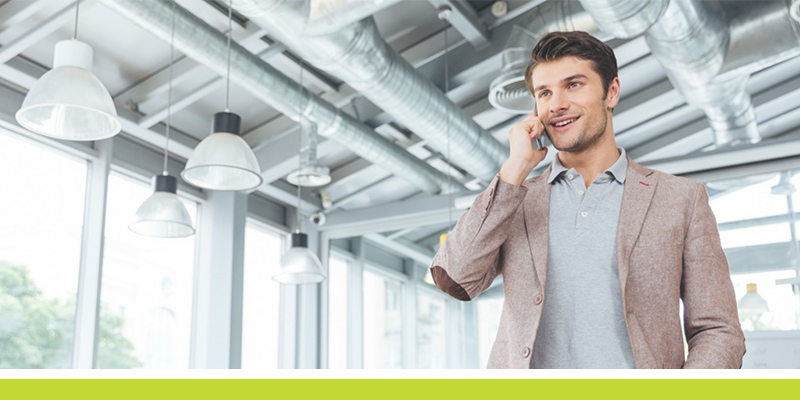
We have all experienced dropped cellular calls and poor data connections, and all of us know that these issues are generally due to weak cellular radio signals (how many ‘bars’ we show we have on our device). Weak radio signals between our cellular devices and the networks’ cell towers may be caused by many factors. In fact, much in our modern environment works against having a good radio signal. Being in elevators, cars, parking garages, large buildings, or even in a home basement often inhibits or blocks the ability of cellular radio signals to reach us. When these issues happen, they can be annoying, but when they happen to first responders during medical or other emergencies, they can put lives at risk.
So, what can you do about it? Are we condemned to have our data limited by the capricious whims of the environment? Far from it. The solution is to use a cellular signal booster to make communication with your provider’s cell tower more reliable with faster data speeds.
Just what is a cellular signal booster? It’s a technologically complex but conceptually simple device that uses two antennas with an amplifier in between to strengthen the radio signals traveling between a cellular device and the carrier’s local cell tower. In general use, one antenna is used to send and receive signals to the carrier’s cellular tower. A second antenna is used to send and receive signals from a local cellular device, like your cell phone or cellular-enabled tablet.
In operation, when a weak signal is received from the carrier on the tower antenna, it goes into the signal booster, is amplified, and then sent out the local device antenna. Thus, the local cellular device sees a strong radio signal. When responding, the local antenna takes the signal from the local cellular device, amplifies it, and sends it out the tower antenna to the carrier. Like I said, conceptually simple.
Although they are great for use at home, businesses, and mobile environments, cellular signal boosters can also be used in emergency responder applications. Modern emergency responder vehicles contain many different connected devices such as laptops, cameras, medical equipment, and communication equipment. It is vital that they have high-quality wireless cellular connections – regardless of the weather conditions. As a result of improved performance when using signal boosters in other situations, many jurisdictions have begun using such boosters in their vehicles.
Technologically, these devices, when properly architected, are highly complex. This complexity stems from the need to interface well with the existing cellular networks and the carriers that operate them. Good, quality cellular signal boosters are ‘safe for network’ and are very much aware of exactly how the network operates, boosting only those channels and frequencies being used by your devices and leaving the rest untouched. The alternative option would be to simply blast strong radio waves indiscriminately, which could potentially wreak havoc every time a signal booster is used. To prevent such mayhem, in March of 2014 the “Amendment of Parts 1, 2, 22, 24, 27, 90 and 95 of the Commission’s Rules to Improve Wireless Coverage Through the Use of Signal Boosters” was adopted by the FCC. The new Network Protection Standard specifies the technical and operational requirements necessary to minimize the potential for interference from consumer signal boosters to wireless networks. Manufacturers of such devices must have them tested in qualified labs, labeled as per FCC standards and approved by the FCC. In addition, when operating a cellular signal booster, the device must register with the carrier it is connected to. All of this has been done to ensure that the use of such devices does not interfere with the normal operation of yours or other’s devices, nor degrade the operation of the carrier’s cellular networks.
There are many cellular signal booster devices on the market, with an expected range of quality and capability. One high-quality device I would recommend is the Nextivity Cel-Fi GO. Multicarrier support, extremely high-power output, and the fact that it is unconditionally safe for network operation make this device the one many emergency responders and businesses use daily. The Nextivity Cel-Fi GO, unlike many other booster products, has an industry-leading 100 dB of signal gain, pretty much guaranteeing great signal strength anywhere in the city and far out into rural areas. Coupled with its almost insanely simple setup, these characteristics make it perfect for use by people who know nothing about radio.
As more and more people turn to cellular wireless connectivity for their main source of internet connection, having the ability to address weak radio signals at home, in an office, or mobile environments is a great tool to have in your wireless connectivity toolbox.
About The Author

David Smith
VP of IoT Solutions
Dave Smith is the Vice President of IoT solutions with responsibility for technical advisement and thought leadership around products, solutions, and services; both inside and outside of the GetWireless portfolio. Dave is a tenured information technology professional skilled in LPWAN, IoT, Wireless Technologies, Telecommunications, Software Development, Testing, and Embedded Systems. David began his career at NASA’s Jet Propulsion Laboratory and prior to joining GetWireless served as CTO and Director for two Innovative IT and IoT hardware manufacturer’s in the Twin Cities area.
